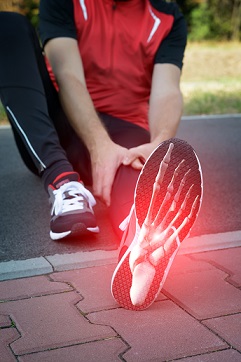New biomedical toolkit heals patients down to the bone

Related topics
Health Innovation Health, Demographic Change and Wellbeing Austria Germany Sweden Norwaydate: 01/12/2015
Project: Construction kit for tailor-made vascula...
acronym: VASCUBONE
See also: CORDIS
Building bones from scratch
The result of a collaborative project led by Germany's Fraunhofer Society, VASCUBONE is a new biotechnology toolbox used to regenerate bone from a variety of biomedical ingredients. VASCUBONE toolbox elements like biocompatible biomaterials and types of cells, FDA-approved growth factors, material modification technologies and simulation/analytical tools can be combined depending on the patient's particular medical need.
VASCUBONE is aimed toward developing successful regenerative therapies for different types of bone defects occurring in different areas, at different sizes and in patients of different ages. This differs from previous therapies, which have generally used the same types of bone implants for all needs, regardless of a patient's individuality.
By developing a basic set of materials that can enhance bone healing and be tailored to a variety of bone defects and patient needs, the developers of VASCUBONE have essentially introduced doctors to a full-service bone repair kit. Some materials, for example, combine with naturally occurring blood proteins to initiate bone tissue growth. Others combine with normal patient body cells (somatic cells) or stem cells to generate tissue. According to project coordinator Heike Walles of the Würzburg branch of the Fraunhofer Institute for Interfacial Engineering and Biotechnology (IGB): “It's like you're going with your car to the garage and you open your toolbox and have everything to repair your car. You have every material you need and can mix them to find the best solution.”
Real solutions for an ageing EU
The European population is ageing (you may even have heard the phrase “the greying of Europe”). As of 2014, the Eurostat showed that roughly one in five Western Europeans was age 65 or older. And, as Walles points out, the ageing body is more likely to have bone issues. The incidence of these critical bone defects in Germany, she says, is roughly the same as cardiovascular disease.
The hope is that VASCUBONE will not only reduce costs related to the treatment of bone defects, but that it will also mean improved recovery time and a quicker return to work for patients. For younger patients who suffer an injury and would normally need months to recover, VASCUBONE will help them recover more quickly and get back to work, which in turn frees up hospital beds for new patients. Instead of three weeks spent healing, Walles says a patient might be laid up for a mere 10 days. With fewer days spent in the hospital, both patients and hospitals could very well save significantly on health care costs – and waiting times would be diminished.
Top specialists and clinical trials
The VASCUBONE project has benefited from the EU funding it received in many ways, including the ability to bring a variety of small companies and specialists on board from countries like Norway, Austria and Sweden. Each brought expertise on materials, modifications and more.
“I would never find such a group in Germany alone,” says Walles. “We benefited from the knowledge of all of Europe.”
In addition, Walles says that having a five-year period of funding (as opposed to the typical three-year period) has been pivotal in the process of fully developing a new product. In fact, the team was actually able to found a small company thanks to the success of the EU-funded project. This new company is currently being certified to use the VASCUBONE materials, and will hopefully be moving the product into clinical trials next year.
Researchers hope to start phase one of clinical trials in Norway, Austria and Germany in early 2016. Once it is determined that the product is safe to use, Phase Two will introduce the product into hospitals. The researchers' goal is to have the VASCUBONE toolbox in hospitals within the next five years to evaluate clinical effectiveness on a larger scale.
